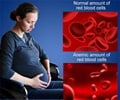New laboratory research at The University of Texas M. D. Anderson Cancer Center shows Fanconi anemia (FA) may lead researchers toward clues in more common diseases
New laboratory research at The University of Texas M. D. Anderson Cancer Center shows Fanconi anemia (FA) may lead researchers toward clues in more common diseases, including highly hereditary types of breast cancer.
In a study published in the Sept. 11 issue of the journal Molecular Cell, scientists report that recruitment of proteins to DNA damage sites is controlled by replication in both FA and BRCA cancer proteins.Lei Li, Ph.D, professor in Experimental Radiation Oncology at M. D. Anderson, and corresponding author of the study, has spent much of his 15-year career studying how the body repairs DNA damage. He says DNA crosslinks are the most severe type of DNA damage; they're actually turned against cancer in certain drugs, including cisplatin.
Answers have been elusive
People with FA, a hereditary disease, are extremely sensitive to DNA crosslinks and at a very high risk for cancer. How the Fanconi pathway protects cells from DNA crosslinks and whether FA proteins act directly on crosslinks has remained unclear despite extensive research.
"Our lab has been working for almost 10 years on why FA cells are so sensitive to crosslinking," Li said. "We've known it must have something to do with how they deal with DNA crosslinks, but this is the first time we've been able to pinpoint a reason for some of them."
FA involves 13 genes; a mutation in any one of them can cause the disease. Three of the FA genes recently were found to be identical to breast cancer susceptibility genes BRCA2, BACH1 and PALB2.
Advertisement
Researchers developed a novel genetic technique, eChIP, a chromatin-IP-based strategy, to examine FA proteins with DNA crosslinks.
Advertisement
New method yields answers
Using this new tool, researchers found that all the FA genes are present in the site of a crosslink. This is the first time FA proteins have been linked directly with DNA crosslinking damage at the molecular level.
"The surprise is that the breast cancer proteins, although they are present at crosslinks, must have DNA replication at the crosslinks," Li said. "If there is a DNA lesion on the genome but no DNA replication, the canonical FA proteins are used to deal with the damage. The breast cancer-related FA proteins are taking care of the DNA lesion that stops DNA replication."
Li said this leads to a new paradigm that there must be two separate subgroups or subpathways within the 13 FA genes.
"The major implication of this study is that now we have a new working model," Li said. "This provides a new direction for future research of breast cancer proteins and DNA damage response in general.
"Our next step is to continue to look at how FA proteins and the subgroup of breast cancer-related proteins help protect cells from DNA crosslink damage. And, in a more general sense, how these cellular mechanisms eventually may help us minimize mutations that ultimately lead to cancer."
Source-Eurekalert
RAS














